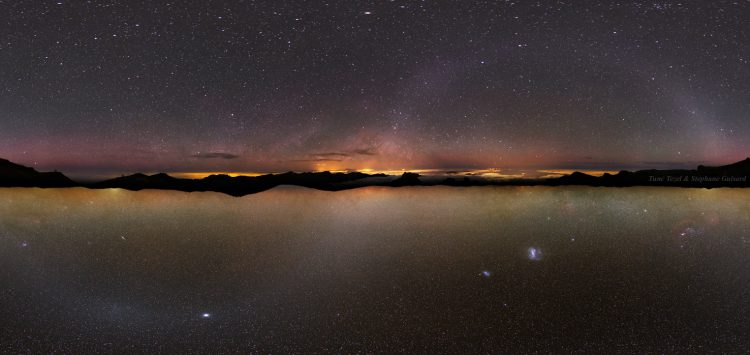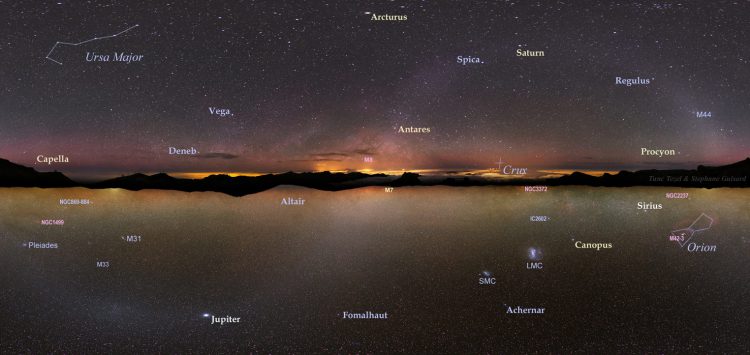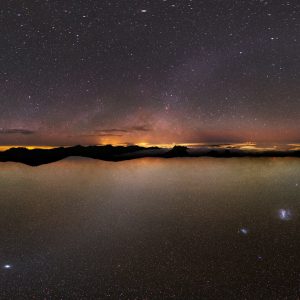A Tale of Two Hemispheres
Description
As seen on Astronomy Picture of the Day, a quest to find planet Earth’s darkest night skies led two TWAN photographers to create this intriguing panorama. In projection, the mosaic view sandwiches the horizons visible in all-sky images taken from Canary Islands in the northern hemisphere (top) and Atacama Desert in the south (Chile) between two hemispheres of the Milky Way Galaxy. Move the slider on the image to see the labels and the constellation lines. The choice of locations and dates allowed the directions to the Milky Way’s north and south galactic poles to be placed near the local zenith. That constrained the faint, diffuse glow of the plane of the Milky Way to the mountainous horizons. As a result, an even fainter S-shaped band of light, Zodiacal Light, can be completely traced through both northern and southern hemisphere night skies. Zodiacal Light is the scattering of sunlight by dust along our solar system’s ecliptic plane. These views are imaged from two of the world’s leading observatory sites. The upper one is made by Tunc Tezel from top of La Palma near Roque de los Muchachos Observatory in the Canary Islands (left), and the lower image is from near Cerro Paranal in Chile which was made a year earlier. In a natural dark night, the faint glow of Zodiacal Light (sunlight reflected and forward scattered by dust in the plane of the Solar System) is detectable as a complete band across the sky, as captured here. Dark starry sky is an essential beauty of our natural environment but it is also astronomically important. Skyglow in our modern life does not allow us to see the darkest possible sky. Skyglow is caused by light pollution, and also naturally by moonlight, twilight, aurora, the zodiacal light, and in minor effects bright planets and starlight (Milky Way and individual stars), and also by airglow (very faint natural glow of our atmosphere). To achieve these images the photographers chose a new Moon night (no Moon) and selected a time when the Milky Way has touched all around the horizon (visible as a circle around the horizon) with the minimum share in causing skyglow. The light around the horizon in these views is mainly from the disc of our home galaxy, the Milky Way. In such dark skies the Zodiacal Band, the fainter continuation of Zodiacal Light, is also visible. A slightly brighter region of the band is an oval glow of back scattered light directly opposite the Sun and known as the Gegenschein (German for “counter glow”) which might be seen with unaided-eye under very dark skies. Gegenschein is clearly visible in the both views.




comments (2)
Awesome!
August 11, 2011 at 6:12 pmWhat a beautiful photo!
August 14, 2011 at 5:00 am